
Journal Menu
► ▼ Journal Menu-
- Materials Home
- Aims & Scope
- Editorial Board
- Reviewer Board
- Topical Advisory Panel
- Instructions for Authors
- Special Issues
- Topics
- Sections & Collections
- Article Processing Charge
- Indexing & Archiving
- Editor’s Choice Articles
- Most Cited & Viewed
- Journal Statistics
- Journal History
- Journal Awards
- Society Collaborations
- Conferences
- Editorial Office
Journal Browser
► ▼ Journal BrowserNeed Help?
Announcements
4 June 2024
MDPI Insights: The CEO's Letter #12 - First Term as CEO, Tu Youyou Award, Books Report

Welcome to the MDPI Insights: The CEO's Letter.
In these monthly letters, I will showcase two key aspects of our work at MDPI: our commitment to empowering researchers and our determination to facilitating open scientific exchange.
Opening Thoughts

Renewed Term as CEO of MDPI
I released the first CEO Letter at the end of June 2023, reflecting on my first month as CEO. Looking back at the first release, I’m pleased to see a marked consistency of content – from talking about open access (OA) and highlighting the great work being done at MDPI, to bringing together the science community with our conferences and building relations with our editorial board members and our industry as a whole.
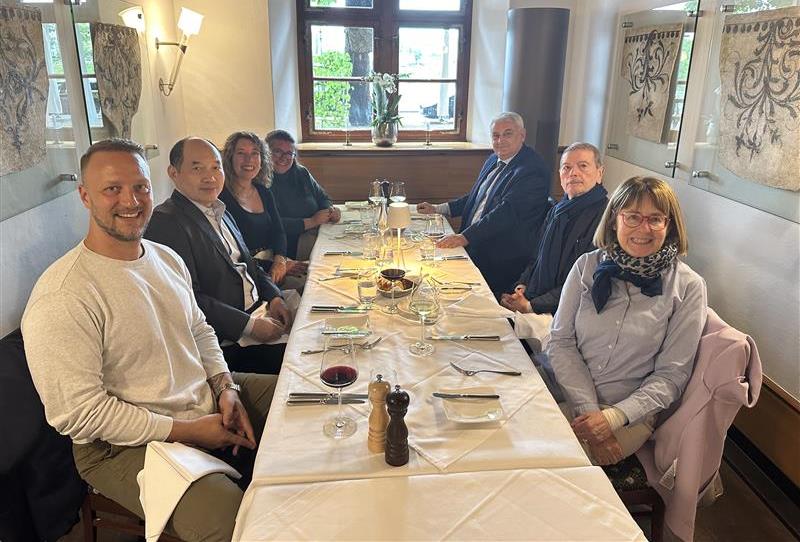
For example, in the first letter, I highlighted our meeting with Dr. Eric O. Freed, the founding and current Editor-in-Chief (EiC) of our journal Viruses. Meeting with Eric is a pleasure, as he has a strong commitment and clear vision for the journal.
On 21 May, 2024 we met with EiC Prof. Dr. Antonino Carbone, and Section EiC Prof. Dr. Alberto Signore (pictured on the left), of our journal Hemato (tracked for Impact Factor, and indexed in Scopus), showing our continued and active collaboration with our chief editors to develop the visions for the journal. Over the course of the day, we gathered feedback and gained an understanding of the journal's expectations and focus on strategic growth.
Reflections on my first year as CEO: achievements and initiatives
During my first year as CEO, there have been many remarkable moments, including a strong focus on bringing people together, focusing on company communications and performance.
According to a recent study of 3,400 people across 10 countries, “Managers impact employees’ mental health (69%) more than doctors (51%) or therapists (41%) — and even the same as a partner (69%).” This is an important topic for me, and perhaps that’s why I place a high value on management culture due to its tangible impact on people’s lives.
When I joined MDPI, I created a weekly meet-up for the Corporate Marketing department and their team leads. On the final Thursday of every month, we hold a Global Marketing meet-up to present projects, share knowledge, and conduct training. For years, I’ve maintained the tradition of ending each of our monthly global calls with a group photo to boost morale, motivation, and productivity, and to finish on a positive note.
In keeping with this, when I stepped into the role of CEO, I launched a bi-weekly management meeting, chairing over 20 MDPI Management Team meetings in my first year. These sessions provide an opportunity for managers to present their team’s work, focusing on their achievements and the challenges they face, while at the same time creating space for sharing knowledge.
“I firmly believe that OA is the future of publishing”
I co-organized and co-led the 2023 MDPI Strategy Management meeting this past October, from which we established an Executive Task Force that meets monthly to prioritize projects aimed at building MDPI into the world’s most trusted publisher. To achieve our goals, we as managers need to maintain collaborative communication and connect to the bigger picture.
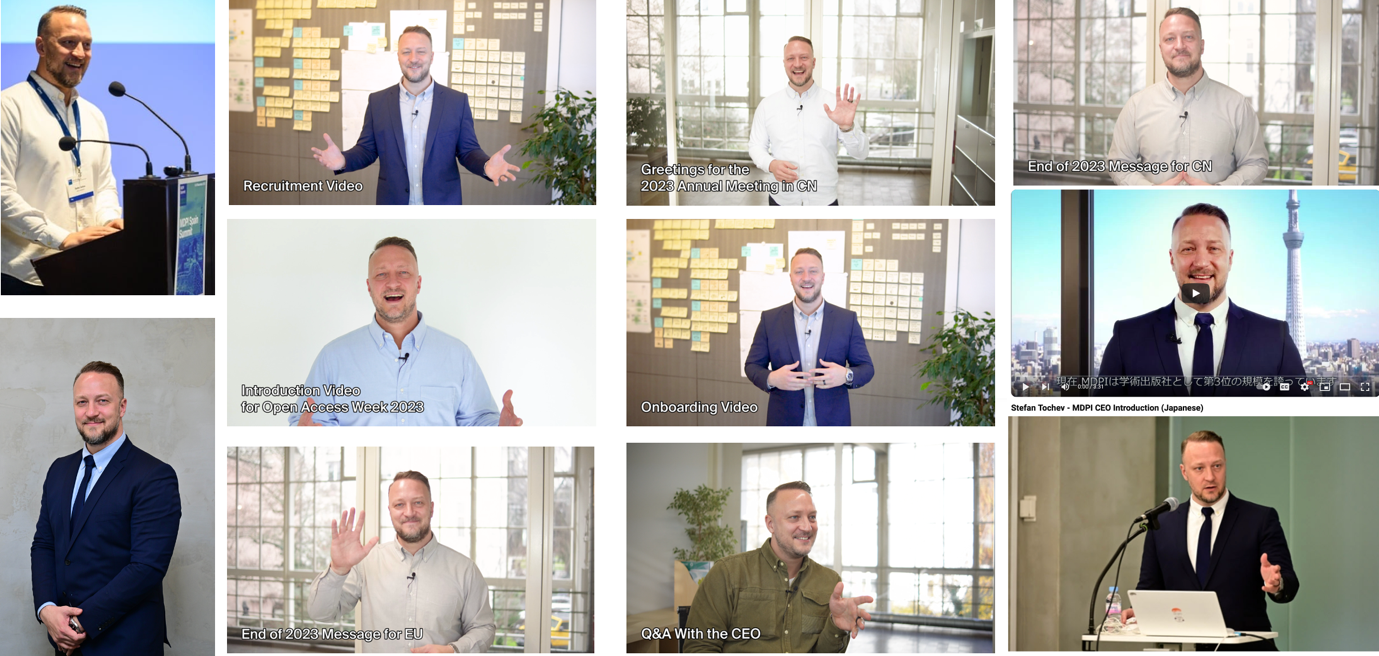
As CEO, I focused on leadership communication by publishing 12 CEO Letters, one for each month of my tenure, to share more about MDPI news and achievements. I also produced ten videos to help further communicate our message.
I was happy to attend eight publishing and conference events, including STM in Frankfurt and Washington, APE, and R2R, and facilitate critical company meetings with Elsevier, Web of Science, ResearchGate, DOAJ, and others. It was a pleasure to meet and have discussions with key organizations and governing bodies such as CAS in China and ANVUR in Italy.
The best part was the opportunity to visit seven MDPI offices across Europe and Asia-Pacific, meeting with local managers and colleagues and supporting them in person. As part of this, I conducted training sessions while continuing to lead the Corporate Marketing department.
Looking ahead
My goal for my second year as CEO is to continue building on the initiatives from the past, including leadership communications, public relations, educational marketing, and company culture, while representing MDPI to the best of my ability. Additionally, I have a few new projects I hope to launch that I believe will be valuable to MDPI and the industry at large.
I firmly believe that OA is the future of publishing, and I am grateful to be in a position to advocate for this belief as part of MDPI, the world's leading open access publisher.
Thank you to our staff and industry friends for your genuine support in this role.
Impactful Research

Nominations Open for the Prestigious Tu Youyou Award 2024
I am pleased to share that MDPI has opened nominations for the 2024 Tu Youyou Award, a prestigious recognition established in honour of Professor Tu Youyou, Nobel Laureate, whose work has significantly transformed the global fight against malaria.
The Tu Youyou Award offers CHF 100,000
In 2015, Professor Tu Youyou was awarded the Nobel Prize in Physiology or Medicine for her discovery of artemisinin, significantly reducing mortality rates from malaria and shaping global health policies. Artemisinin-based combination therapies (ACTs) are now the standard treatment endorsed by the World Health Organization (WHO), saving countless lives, especially in regions heavily burdened by malaria.
MDPI Special Issue
To mark Professor Tu’s 80th birthday in 2009, MDPI’s journal Molecules issued a Special Issue focusing on her contributions to medical research. Recognizing her continuous contribution, MDPI created the Tu Youyou Award in 2016 to honour outstanding achievements in natural products and medicinal chemistry.
The deadline for nominations is 31 December 2024
Nominations are open to scientists excelling in natural products and medicinal chemistry. Eligible nominators include academic institutes, universities, and societies. The deadline for nominations is 31 December 2024, with the winners to be announced on 30 April 2025. The Tu Youyou Award offers CHF 100,000, split equally among the winners.
MDPI encourages the academic community to nominate individuals who have demonstrated excellence and innovation in line with Professor Tu’s legacy. This award not only honours individual achievement but also encourages further scientific exploration and discovery in critical areas of medicine.
This award embodies our deep commitment to groundbreaking research that drives societal progress and celebrates the legacy of one of the greatest medical innovators of our time.
Inside MDPI

2023 MDPI Books Report
In past CEO letters, I have highlighted our publishing process and the impactful peer-reviewed articles that represent the core output of scholarly publishing. However, scholarly books are another pillar of publishing that MDPI also services, which our core audience may not be fully aware of. In this section, I highlight the 2023 MDPI Books report, released by our MDPI Books team in May 2024.
Download the 2023 MDPI Books Report
In the report, you will find a summary of MDPI Books’ 10th anniversary, the books indexed in the Web of Science Book Citation Index, our market outreach, and our outlook for 2024.
MDPI Books celebrated its 10th anniversary in 2023
MDPI Books published its first OA Reprint, “From the Renaissance to the Modern World,” in 2013. Over the past ten years, MDPI Books has seen a significant increase in both the volume and nature of published Reprints. As of December 2023, our catalogue includes a total of 7,369 Reprints, with 1,811 of them added in 2023 alone. MDPI Books includes monographs, book series, edited books and reprints of special issues and topical collections, among other book types.
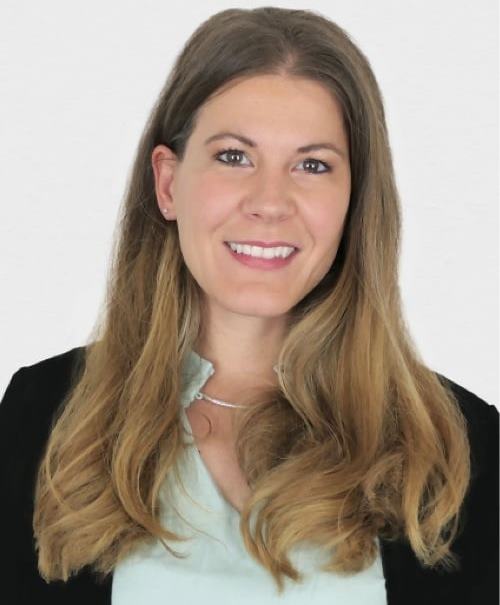
We’re also celebrating the 10-year MDPI anniversary of Laura Wagner, Head of MDPI Books.
Laura Wagner (Head of Books Division)
Laura holds a Bachelor’s degree in Art History and History from the University of Basel. After her studies, she started her career at an art gallery in Basel.
Since joining MDPI in 2014, Laura has held several roles within the company. This included editorial work, development of reprint and book services, and the temporary management of the journal Arts.
Currently Laura holds the role of Head of Books Division and is in charge of the development and strategic direction of MDPI Books.
MDPI Books indexed in Web of Science Book Citation Index
Another milestone in 2023 was the indexing of four book titles in the Web of Science Book Citation Index. The indexing of our open access books is crucial for their reach and accessibility, ensuring higher visibility within the open science community.

- Self-Representation in an Expanded Field: From Self-Portraiture to Selfie, Contemporary Art in the Social Media Age by editor Ace Lehner
- Towards Socially Integrative Cities: Perspectives on Urban Sustainability in Europe and China by editors Bernhard Müller, Jian Liu, Jianming Cai, Paulina Schiappacasse, Hans-Martin Neumann, and Baojun Yang
- Transitioning to Gender Equality by editors Christa Binswanger and Andrea Zimmermann
- Under Construction: Performing Critical Identity by editor Marie-Anne Kohl
If you would like to learn more about MDPI Books, please visit: www.mdpi.com/books
If you are thinking of writing or editing a book, you can submit your proposal at www.mdpi.com/books/publish-with-us, or email us at books@mdpi.com.
Coming Together for Science

Polymers 2024 – Polymers for a Safe and Sustainable Future
Our conference team successfully managed the Polymers 2024 – Polymers for a Safe and Sustainable Future international conference which took place from 28–31 May 2024 in Athens, Greece. The conference was chaired by Prof. Dr. Dimitrios Bikiaris and Prof. Dr. Konstantinos Triantafyllidis from the Aristotle University of Thessaloniki, Greece, and Dr. Ioanna Deligkiozi from AXIA Innovation, Germany. In total, the conference had 259 accepted abstracts and over 300 attendees from 22 different countries.
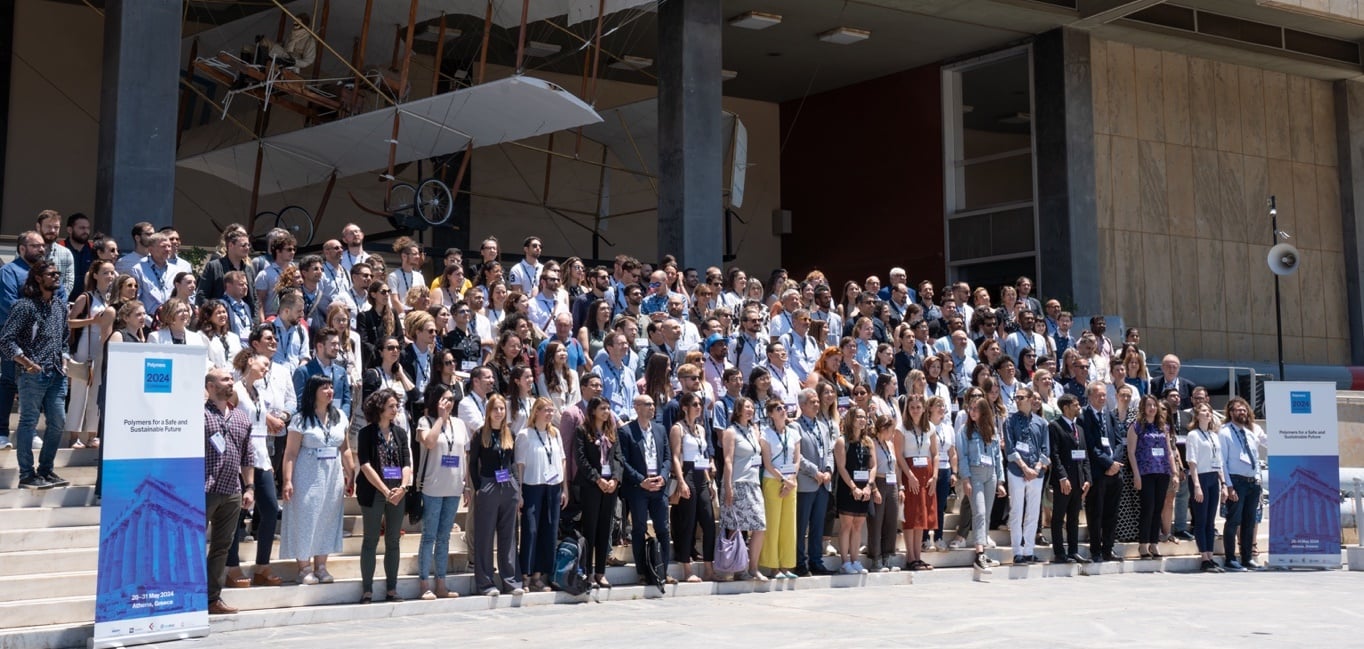
The conference featured three keynote speakers and 12 invited speakers, including esteemed scholars from Europe, Asia, Africa, and Canada. It included 60 selected talks and 189 posters, chosen by the 24 members of the Scientific Committee along with the three Conference Chairs. The event explored the latest scientific advancements and innovations in polymer science, focusing on creating safe, sustainable, and environmentally friendly materials. Emphasizing green polymer chemistry and the use of bioresources, the conference promoted the synthesis of biobased and biodegradable polymers.
The conference featured esteemed scholars from Europe, Asia, Africa, and Canada
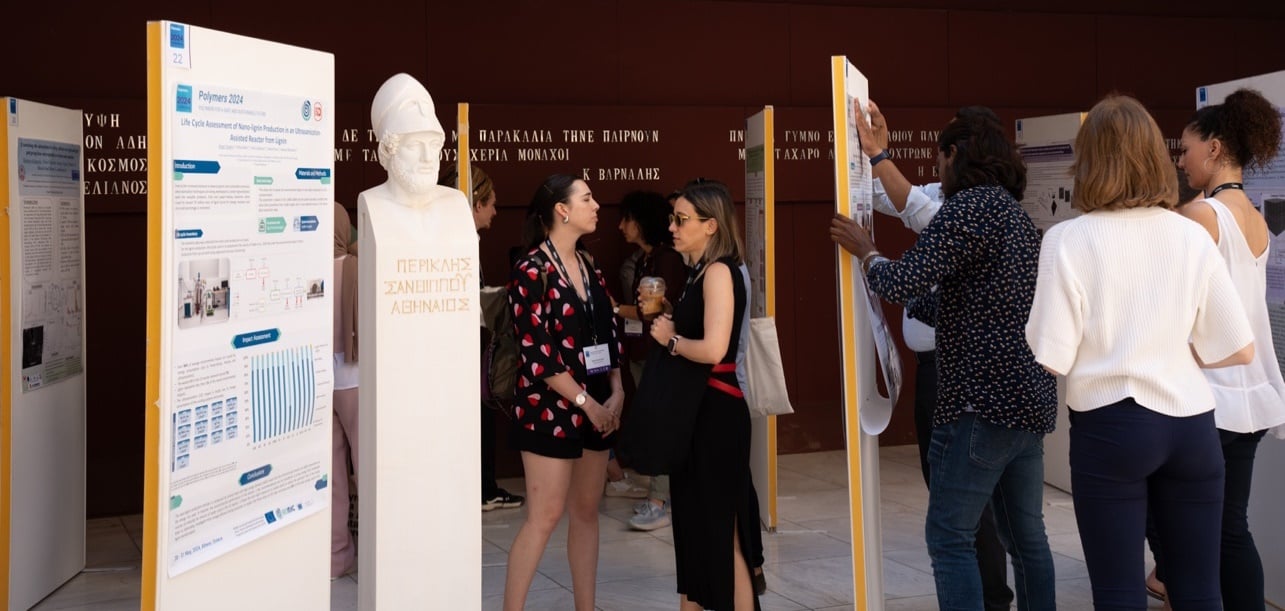
Conference awards
The conference also presented three awards: two sponsored by the journal Polymers – The Best Poster Award (€500) and the Best Oral Presentation Award (€600) – and one sponsored by Ossila, the Best Student Poster Award (€500).
Thank you to our 16 sponsors, three partnering societies (Hellenic Polymer Society, European Polymer Federation, and North American Thermal Analysis Society [NATAS]) and eight media partners.
Upcoming in-person event
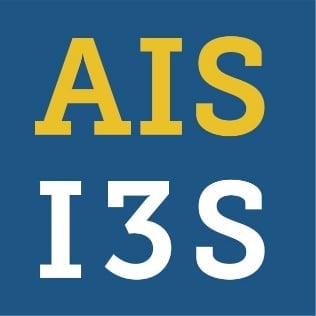
1–4 August, 2024
The 1st International Conference on AI Sensors & The 10th International Symposium on Sensor Science
Location: Singapore
The AI Sensors 2024 Conference will unite innovators and experts in the realms of sensors, sensing technology, and artificial intelligence.
Find more upcoming MDPI events here.
Closing Thoughts

3rd World Forum Principles of Scientific Publications
I’m pleased to share that MDPI sponsored and attended the 3rd World Forum on Principles of Scientific Publications, which took place from 22–24 May in Malaga, Spain. The event brought together academic professionals and leading researchers to discuss critical topics in the realm of publishing and research. Presentation topics included Open Science, AI in Publishing, Predatory Journals, Fake Publications, Challenges for Non-native English Speakers, and more.
“It was great to see strong support from MDPI authors in the audience”
MDPI presentations
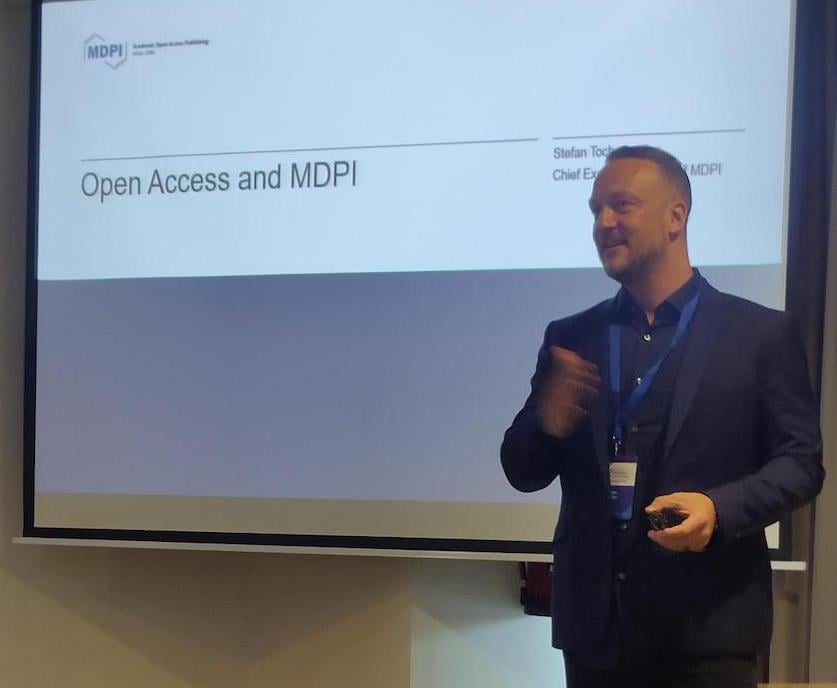
Stefan Tochev (CEO, MDPI) presenting at the 3rd World Forum Principles of Scientific Publications
I had the privilege of attending and presenting at the event, along with my colleague Dr. Enric Sayas (Business Analyst, MDPI) from our Barcelona office, who explored the ethical concerns and opportunities brought by AI in publishing.
I took the opportunity to present on Open Science, the benefits of Open Access, and MDPI’s performance, operations, and investment in ethics. Special thanks to Evan Escamilla (Project Manager, MDPI Books) and Facundo Santomé (Sr. Marketing Manager, MDPI) who also joined the conference.
It was great to see strong support from MDPI authors in the audience who shared their positive experiences publishing with us. Their story reflects the experience of the vast majority of authors who choose to work with MDPI.
We also encountered some conservative views on OA, which created an opportunity for open discussion aimed at addressing concerns about OA and MDPI. Engaging in such discussions is important, as scepticism sometimes arises from misinformation or from a misunderstanding of who we are and how we operate. When we engage in open and honest discussion, we tend to see people getting a better understanding of MDPI, which helps address any misconceptions they may have had.
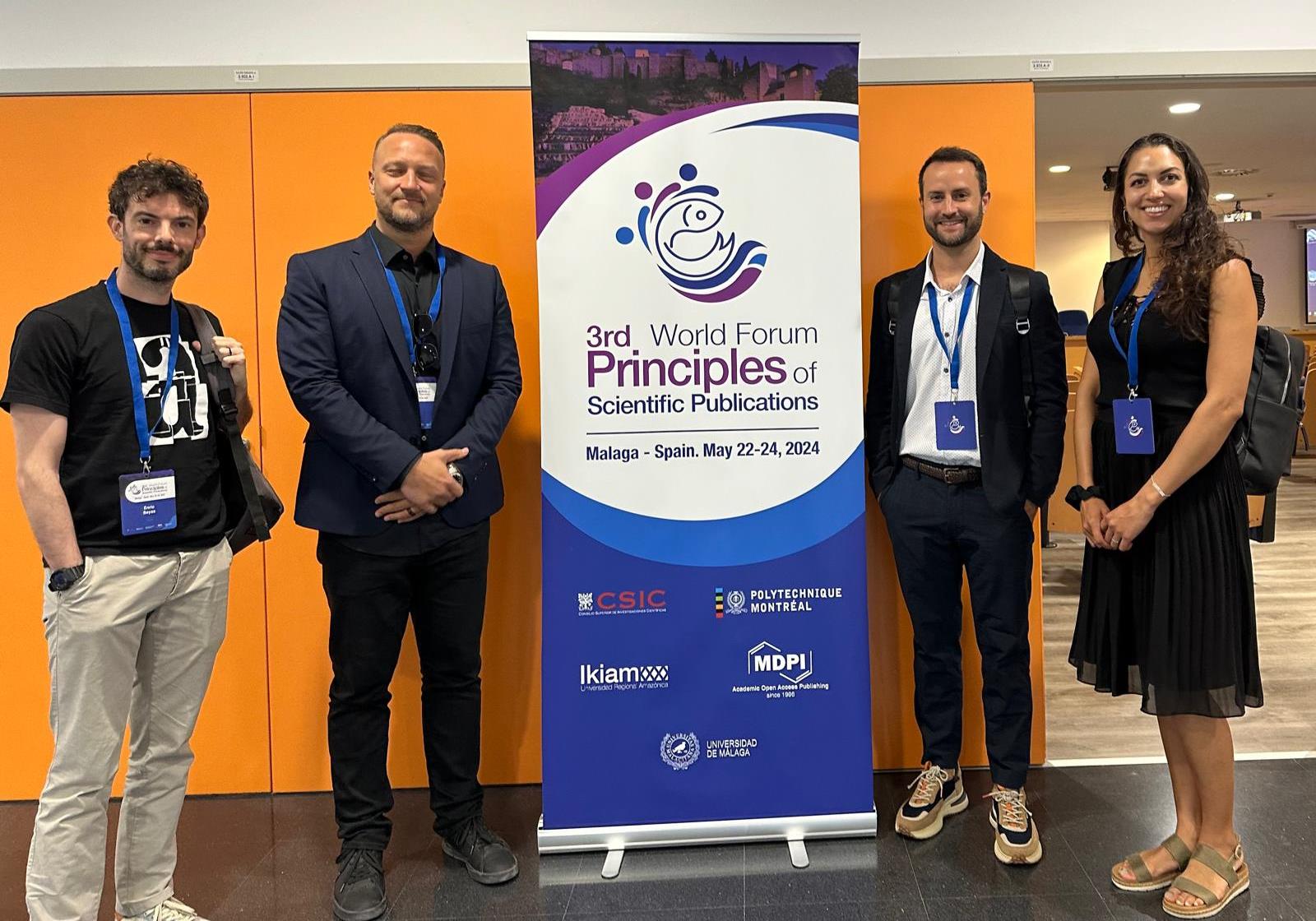
Left to right: Dr. Enric Sayas (Business Analyst, MDPI), Stefan Tochev (CEO, MDPI), Facundo Santomé (Sr. Marketing Manager, MDPI), and Evan Escamilla (Project Manager, MDPI Books) at 3rd World Forum Principles of Scientific Publications
Chief Executive Officer
MDPI AG
3 June 2024
Meet Us at the 50th World Polymer Congress, 1–4 July 2024, Coventry, UK

The 50th World Polymer Congress will be held from 1 to 4 July 2024 in Coventry, UK. The conference is being organized by the University of Warwick.
The areas of focus for the above conference include the following:
- Bio-based polymer chemistry;
- European polymer journals;
- Polymers at surfaces and interfaces;
- Polymers for data science;
- Dynamic polymer networks;
- Block copolymers and self-assembly;
- Functional and sustainable polymers & elastomers.
The following MDPI journals will be represented at the conference:
- Materials;
- Polymers;
- Molecules;
- Membranes;
- Gels;
- Nanomaterials.
If you are planning to attend the above conference, please feel free to start an online conversation with us. Our delegates look forward to meeting you and answering any questions that you may have. Our booth number is awaiting confirmation and will be updated as soon as possible. For more information about the conference, please visit the following link: https://www.macro2024.org/.
3 June 2024
Prof. Dr. Weili Zhang Appointed Section Editor-in-Chief of Section “Optical and Photonic Materials” in Materials

We are pleased to announce that Prof. Dr. Weili Zhang has been appointed Section Editor-in-Chief of the Section “Optical and Photonic Materials” in Materials (ISSN: 1996-1944).
Prof. Dr. Weili Zhang, a professor of electrical and computer engineering at Oklahoma State University, USA, holds a Ph.D. in optical engineering from Tianjin University (1993), China. His research interests include terahertz optoelectronics, nano- and micro-structured materials optics, ultrafast phenomena, and semiconductor photonics. Prof. Dr. Zhang has published over 420 invited or contributed articles in peer-reviewed journals. His articles indexed by Web of Science have received a total of over 21,500 cites, with an h-index of 74. Prof. Dr. Zhang has been named a Clarivate Highly Cited Researcher from 2019 to 2023. He currently serves as associate editor of Photonics Insights, and is a fellow of Optica (formerly OSA).
The following is a Q&A with Prof. Dr. Weili Zhang, who shared his vision for the Section, in addition to his views on the research area and open access publishing:
1. What appealed to you about the journal that made you want to become its Section Editor-in-Chief?
My in-depth interaction with Materials began with a review article that we submitted to this journal. I was very impressed with the quality work of the editors and reviewers, their professional handling of manuscripts, and the incredibly fast peer-review cycle from submission, to revision, to publication. With the role of Section Editor-in-Chief, I am hoping to have an opportunity to assist with attracting high-impact submissions, increasing visibility within the optics and photonics materials research community, seeking collaborations with professional societies, identifying emerging areas of the fields, and enhancing the impact and reputation of the journal.
2. What is your vision for the Section “Optical and Photonic Materials”?
Optical and photonic materials, as an interdisciplinary research field, bring together researchers from optics and photonics, materials science, engineering, and other areas to tackle emerging challenges in science and technologies. This will, on the one hand, lead to breakthroughs in research advances of material science, optics, photonics, and optoelectronics, and on the other hand, transformative technologies that promise a wide range of applications, particularly in communications, healthcare, and renewable energy.
3. As an expert in the field of optical and photonic materials, which research topics do you think are popular at present and what does the future of this field of research look like?
Currently, popular research topics include (1) subwavelength photonics, such as micro- and nano-scale metamaterials and metasurfaces, two-dimensional materials, and plasmonic geometries; (2) quantum photonics; and (3) biophotonics. The future of research in optics and photonics materials is promising. Breakthroughs in these popular topics will eventually lead to advancements in materials, novel devices, circuits, methods, and technologies for practical deployment in various applications.
4. You have reviewed many articles as a reviewer. What do you think are the most important points of an article?
Obviously, novelty is the most important point of a research article. In optical and photonic materials, in particular, novelty can be revealed through research creativity, innovations, and discoveries. In addition, novel work should also be presented through rigorous methodology, sound analysis, and clear communication to ensure the integrity and high impact of the publication.
5. What do you think of the development of open access in the publishing field?
Open access for journals has been proven to be a very effective method to disseminate research. It significantly increases the accessibility of published research by making articles freely available to anyone with an internet connection. This is, in particular, very convenient for researchers and readers who are working diligently off campus. A good example is Optics Express, one of the Optica journals. It has been an open access journal since it was launched over 20 years ago and has been very well received by the optics and photonics community.
We warmly welcome Prof. Dr. Weili Zhang as the new Section Editor-in-Chief and we look forward to him leading Materials to many more milestones.
31 May 2024
Materials | Ten Outstanding Topical Advisory Panel Members Promoted to Editorial Board Members

We are pleased to announce that after a recommendation from the Editor-in-Chief of Materials (ISSN: 1996-1944), Prof. Dr. Maryam Tabrizian, ten outstanding Topical Advisory Panel Members were promoted to the position of Editorial Board Members. This is due to their impressive expertise in the materials field and great dedication to the journal over the past two years. We wish them every success in their new position and look forward to working with them on the journal.
Name: Prof. Dr. Xinxing Zhang
Affiliation: State Key Laboratory of Polymer Materials Engineering, Polymer Research Institute of Sichuan University, Chengdu, China
Homepage: https://sklpme.scu.edu.cn/szdw/gdyr/js/2017-04-28/156.html
Interests: self-healing; supramolecular chemistry; polymer nanocomposites; sensors; actuators
Name: Prof. Dr. Jingdong Zhang
Affiliation: School of Chemistry and Chemical Engineering, Huazhong University of Science and Technology, Wuhan, China
Homepage: http://faculty.hust.edu.cn/zhangjingdong/zh_CN/index.htm
Interests: electrochemical analysis; environmental chemistry; materials chemistry; pollution analysis and control; photoelectrochemical catalysis; nano-optoelectronic materials; biosensors
Name: Dr. Zhonghua Yao
Affiliation: School of Materials Science and Engineering, Wuhan University of Technology, Wuhan, China
Homepage: http://smse.whut.edu.cn/szdw/jsml/202311/t20231128_971740.shtml
Interests: piezoelectric materials; ferroelectric materials; dielectric materials; multilayered ceramic capacitors; low-temperature cofired ceramics; giant-permittivity materials
Name: Prof. Dr. Rujie He
Affiliation: Institute of Advanced Structure Technology, Beijing Institute of Technology, Beijing, China
Homepage: https://xjjg.bit.edu.cn/yjtd/zrjs/b83728.htm
Interests: structural ceramics; ceramic matrix composites
Name: Dr. Xueyan Liu
Affiliation: Section of Pavement Engineering, Department of Engineering Structures, Delft University of Technology, Delft, the Netherlands
Homepage: https://www.tudelft.nl/en/ceg/about-faculty/departments/engineering-structures/sections-labs/pavement-engineering/staff/dr-xueyan-liu
Interests: mechanics of multiphase media; experimental testing and constitutive modeling of pavement materials; pavement analysis & design; multi-physics flow and damage phenomena in asphalt mixtures; non-linear finite element analysis techniques; experimental testing and constitutive modeling of structural interlayer systems; experimental testing and computational characterization of multilayer asphalt surfacing systems on orthotropic steel deck bridges; multi-scale constitutive modeling of asphalt concrete; induction healing technology for asphalt concrete; warm rubberized asphalt concrete technology; waterproofing membrane material development and testing method; epoxy modified bitumen technology for durable and sustainable pavement; cold in place asphalt concrete recycling; high quality recycling of polymer modified asphalt; warm/cold rubberized asphalt concrete technology
Name: Prof. Dr. Zengtao Chen
Affiliation: Department of Mechanical Engineering, University of Alberta, Edmonton, Canada
Homepage: https://apps.ualberta.ca/directory/person/zengtao
Interests: characterization of materials; micromechanics modeling; finite element modeling; functionally graded materials; smart materials and structures; composite materials; multifield behavior; manufacturing engineering; structural integrity; thermoelasticity; electromagnetic materials
Name: Prof. Dr. Qunhong Weng
Affiliation: School of Materials Science and Engineering, Hunan University, Changsha, China
Homepage: http://www.wengqh.de/members.html
Interests: boron nitride; band gap; functional materials; biomedicine; microbattery
Name: Prof. Dr. Gang Li
Affiliation: Engineering Laboratory for Modern Silk, College of Textile and Clothing Engineering, Soochow University, Suzhou, China
Homepage: https://textile.suda.edu.cn/93/93/c6548a168851/page.htm
Interests: biomedical textiles; silk-based biomaterials; fiber-based implants; smart e-textiles; functional textiles; intestinal stents; vascular prosthesis; drug-loaded sutures
Name: Dr. Bin Wang
Affiliation: Department of Mechanical and Aerospace Engineering, Brunel University London, Uxbridge, London, UK
Homepage: https://www.brunel.ac.uk/people/bin-wang
Interests: constitutive laws of materials; composites; stress and structural analysis; fracture and fatigue; functional materials; biomechanics; impact and dynamics
Name: Dr. Jiehua Li
Affiliation: Institute of Casting Research, Montanuniversität Leoben, Leoben, Austria
Homepage: https://pure.unileoben.ac.at/portal/en/persons/jiehua-li(fbf73479-8998-4bb6-be09-3e24505730be).html
Interests: solidification and casting; electron microscopy; high-performance alloys; phase transformation
23 May 2024
Transfer Service in MDPI
We are pleased to announce MDPI’s Transfer Service.
This service provides a convenient method of transferring your manuscript file, along with any reviewer comments, to another journal within our publishing portfolio.
We are committed to helping authors find the right home for their research, and we will provide authors with guidance and technical support through all stages of the transfer process. Authors will be able to choose to transfer in the following two situations:
1. Select alternative journals on submission.
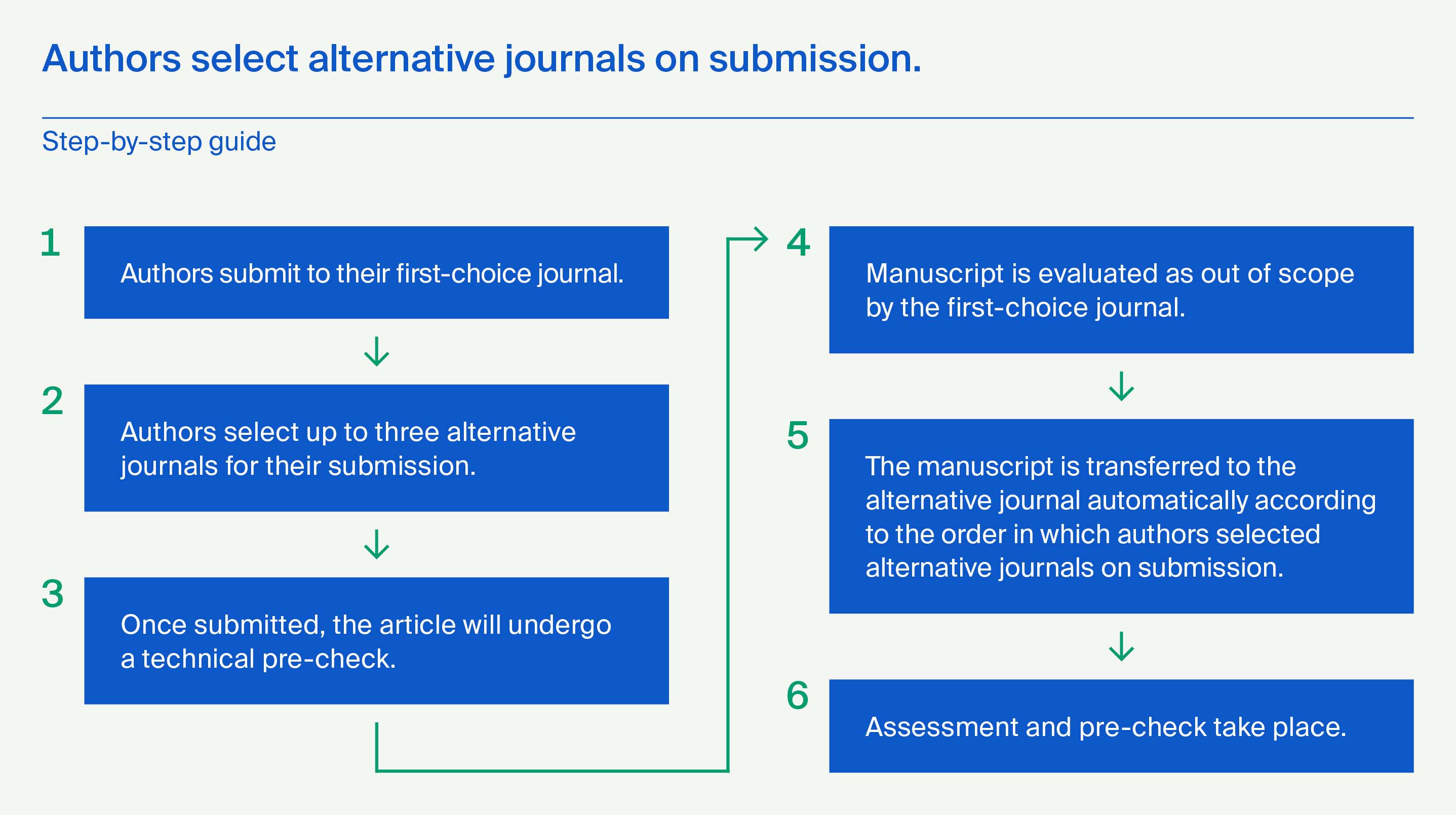
2. Authors are encouraged to transfer manuscripts to other MDPI journals.
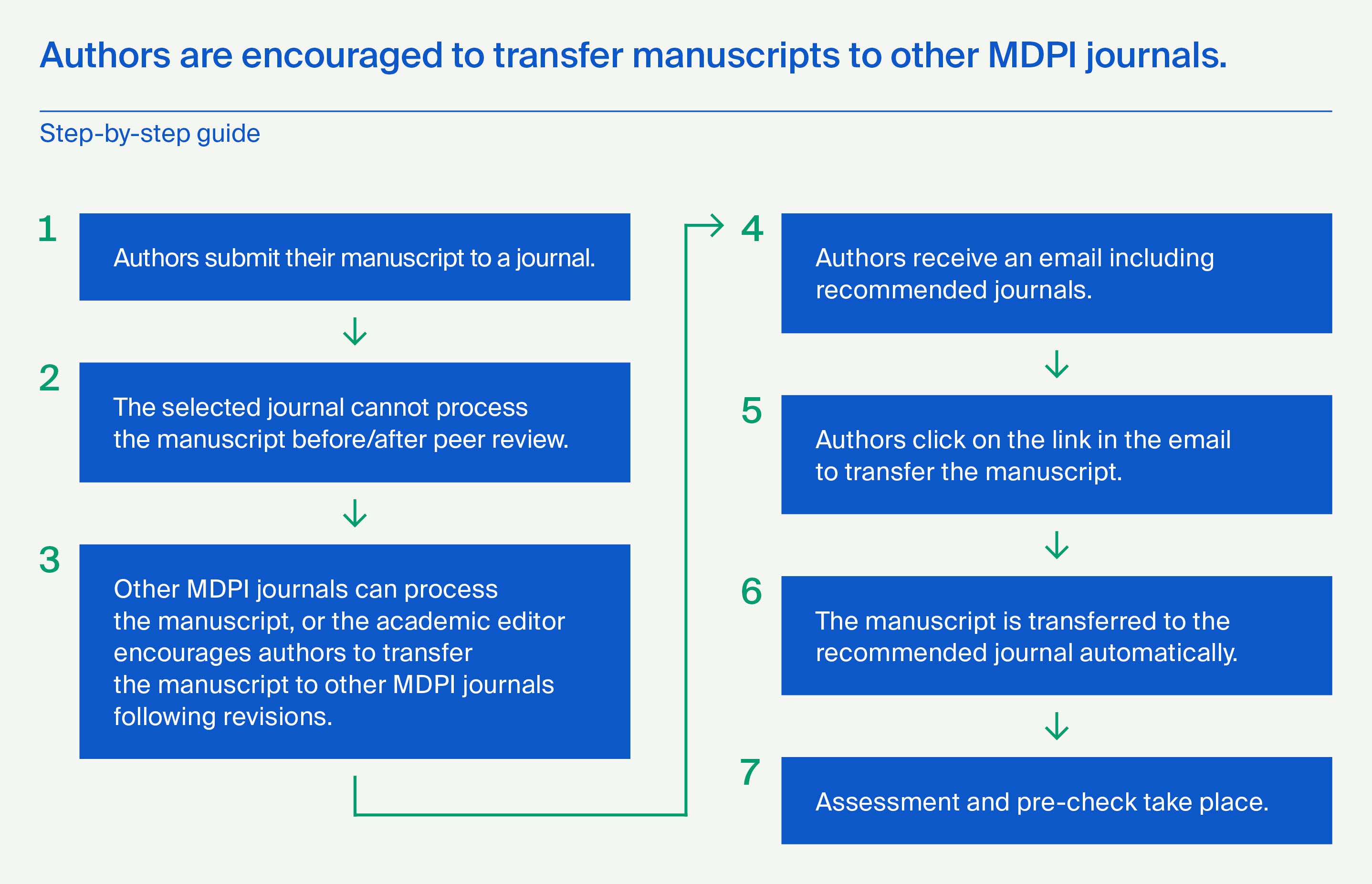
More details about the Transfer Service can be found at the following link:
22 May 2024
Materials Webinar | Innovations in Silicon–Based Solar Cells, 29 May 2024

Welcome message by the webinar chair Dr. Rabin Basnet:
Join our comprehensive webinar exploring cutting–edge advancements in silicon solar cells and module technology. Our expert panel will delve into various topics, including the latest developments in tunnel oxide passivated contacts, the long–term reliability of high–efficiency silicon modules, and the repair possibility of the backsheets of silicon modules.
Through insightful presentations and discussions, you will gain valuable insights into the latest trends, technologies, and strategies shaping the future of silicon photovoltaic (PV) technologies. Whether you are a researcher from academia or industry, an engineer, or a sustainability enthusiast, this webinar offers a unique opportunity to explore innovative approaches toward building a greener, more resilient future for generations to come.
Welcome message by the webinar chair Dr. Mohamed M. Shehata:
Welcome to our groundbreaking webinar, where we will embark on a journey through the dynamic realm of silicon solar cell technology!
We invite you to contribute to this Special Issue below, dedicated to exploring the latest innovations in silicon solar cell technology. As the world embraces sustainable energy solutions, silicon–based solar cells stand as pillars of reliability and scalability, offering promising avenues for harnessing solar energy.
Throughout this Special Issue, we aim to uncover a plethora of topics, from the enhancement of ingots and wafers to the exploration of advanced cell architectures such as silicon heterojunctions (SHJs) and tunnel oxide passivated contacts (TOPCons). We seek to delve into the intricacies of defect engineering, impurity gettering, and long–term performance reliability, all crucial elements in optimizing the efficiency and durability of silicon solar cells.
Moreover, we eagerly anticipate contributions relating to the burgeoning field of tandem solar cells, where perovskite materials are integrated with silicon to unlock unprecedented potential efficiency. Additionally, we encourage discussions on sustainable practices for managing the end–of–life phase of PV modules, underlining our commitment to circular economy principles within the renewable energy landscape.
As we convene to exchange insights, expertise, and discoveries, we invite researchers, academics, and industry professionals alike to join us in shaping the future of silicon solar cell technology. Together, let us push the boundaries of innovation, propel sustainable energy solutions, and pave the way towards a brighter, greener future for generations to come.
Date: 29 May 2024 at 8:00 a.m. CEST | 2:00 a.m. EDT | 2:00 p.m. CST Asia
Webinar ID: 822 6317 4886
Webinar announcement: https://sciforum.net/event/Materials–13
Register now for free!
|
Speaker/Presentation |
Time in CEST |
Time in CST Asia |
|
Dr. Rabin Basnet and Dr. Mohamed M. Shehata |
8:00 a.m.–8:10 a.m. |
2:00 p.m.–2:10 p.m. |
|
Ms. Anika Gassner |
8:10 a.m.–8:40 a.m. |
2:10 p.m.–2:40 p.m. |
|
Dr. Jana–Isabelle Polzin |
8:40 a.m.–9:10 a.m. |
2:40 p.m.–3:10 p.m. |
|
Dr. Heping Shen |
9:10 a.m.–9:40 a.m. |
3:10 p.m.–3:40 p.m. |
|
Q&A Session |
9:40 a.m.–9:55 a.m. |
3:40 p.m.–3:55 p.m. |
|
Dr. Rabin Basnet and Dr. Mohamed M. Shehata |
9:55 a.m.–10:00 a.m. |
3:55 p.m.–4:00 p.m. |
After registering, you will receive a confirmation email containing information on how to join the webinar.
Registrations with academic institutional email addresses will be prioritized.
Unable to attend? Register anyway and we will inform you when the recording is available.
Webinar Chairs and Keynote Speakers:
- Rabin Basnet (Chair), School of Engineering, ANU College of Engineering, Computer Science and Cybernetics, The Australian National University, Australia;
- Mohamed M. Shehata (Chair), School of Engineering, ANU College of Engineering, Computer Science and Cybernetics, The Australian National University, Australia;
- Anika Gassner, OFI, Austrian Research Institute for Chemistry and Technology, Vienna, Austria;
- Jana–Isabelle Polzin, Fraunhofer Institute for Solar Energy Systems ISE, Freiburg, Germany;
- Heping Shen, College of Engineering, Computing and Cybernetics, The Australian National University, Australia.
Please find the relevant Special Issue at the following link:
“Innovations in Silicon–Based Solar Cells”
Guest Editors: Dr. Rabin Basnet and Dr. Mohamed M. Shehata
Deadline for manuscript submissions: 20 September 2024
17 May 2024
Tu Youyou Award—Open for Nominations
In acknowledgment of the groundbreaking achievements of Professor Tu Youyou, the Nobel laureate credited with the discovery of artemisinin, MDPI is proud to announce the Tu Youyou Award. This award, inaugurated in 2016, seeks to honor scholars who excel in the fields of natural products chemistry and medicinal chemistry.
Prize:
- CHF 100,000 in total (If there is more than one winner, the prize will be divided equally amongst the winners);
- An award medal for each winner.
Who should be nominated?
- Scientists with outstanding achievements and contributions in the fields of natural products chemistry and medicinal chemistry.
Who can submit a nomination?
- Academic research institutes
- Universities
- Academic societies
Any personal nominations are not accepted.
How do I submit a nomination?
Candidates’ institutional affiliations need to submit their nominations for final candidates to the Tu Youyou Award Team directly by email after internal screening, and each institution can only nominate a maximum of two candidates for each edition of the Tu Youyou Award. Please note that the nominations cannot be modified once they are submitted and confirmed by the Tu Youyou Award Team.
Required nomination materials:
Nomination Form (Download)
Schedule:
Nomination deadline: 31 December 2024;
Winner announcement: 30 April 2025.
Contact:
Tu Youyou Award Team (tuyouyouaward@mdpi.com)
More information can be found on the Tu Youyou Award official website. For any inquiries, do not hesitate to contact the Tu Youyou Award Team.
16 May 2024
MDPI Romania Author Training Academic Events in April
MDPI Romania sponsored four events over the month of April, contributing author training sessions to each event.
The NutriSciLabs 2024 conference was held at the Carol Davila University of Medicine and Pharmacy on 12 April 2024. Organized by the Association of Students from the Faculty of Pharmacy Studies, the conference aimed to enhance students’ academic writing and research skills, and bolster their confidence in participating in the academic world. Ioana Paunescu, journal relations specialist for MDPI Romania, led the training session. Paunescu first outlined MDPI’s history and core values, then explained academic writing techniques, ethics, and similarity percentages. The presentation covered the entire editorial process, highlighting the amount of attention paid to details throughout manuscript processing. Paunescu also discussed common errors that authors make while writing, and how to avoid such errors.
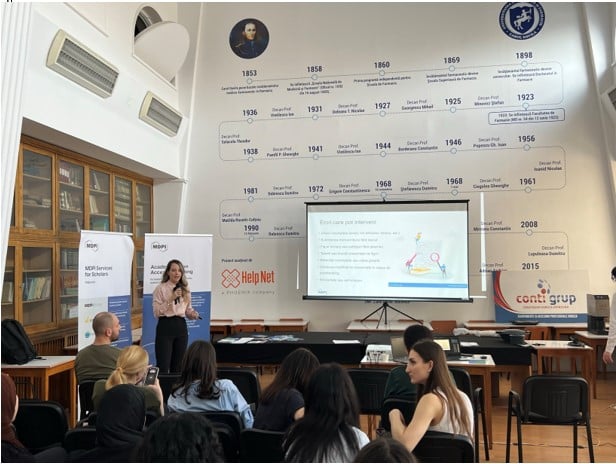
On 13 April 2024, the NextGEN 2.0 Student Conference took place at the Babes-Bolyai University of Cluj-Napoca. NextGen Healthcare organized this event with the university’s European Students’ Society to discuss European and international current affairs. MDPI Romania contributed an author training session called Steps of the Publication Process. Irina Codruta Zaharia, journal relations specialist, began the session with a general introduction of MDPI before diving into different article types, different layout formats, possible journals to submit to, the MDPI submission checklist, and the MDPI editorial process. By explaining the fundamentals of writing and publishing academic papers, Zaharia imparted valuable industry knowledge to the curious minds present. Participants were eager to engage with Zaharia in the subsequent Q&A session.
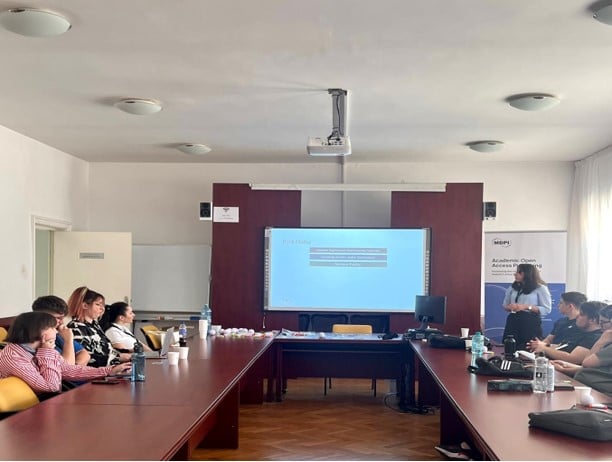
Celebrating its 20th anniversary this year, the International Conference “Students for Students” has long been a gathering place for undergraduate and postgraduate students of all nationalities to present their work and exchange ideas with each other. This year’s conference was held on 18 April 2024, with MDPI Romania contributing an author training session called The World of Open Access. Key speakers included Dr. Norbert Kiss from MDPI Romania and Prof. Dragos Horvath from Strasbourg University. Dr. Kiss discussed the history of open access, differences between open access publishing and traditional publishing, and implications for open access in the future. Attendees expressed keen interest in the subject, approaching Dr. Kiss with questions about academic publishing as well as his career trajectory.
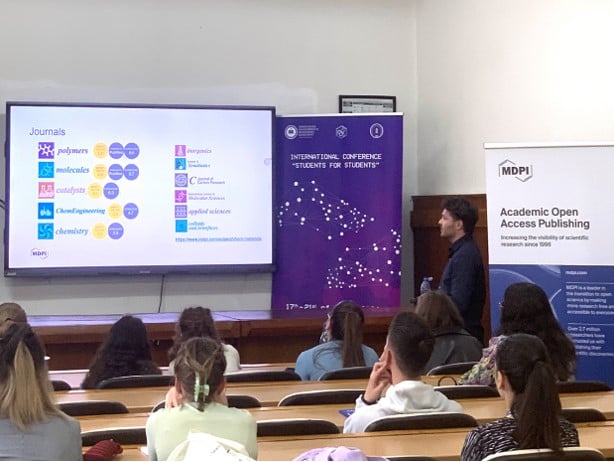
Most recently, on 26 April 2024, MDPI Romania sponsored the National Symposium of Students from Geology and Geophysics Faculties. The AAPG Students Chapter at the Babes-Bolyai University organized this event as an opportunity for geology students from all Romanian universities to present their work and confer with other researchers. Dr. Kiss gave his lecture The World of Open Access at this event as well.
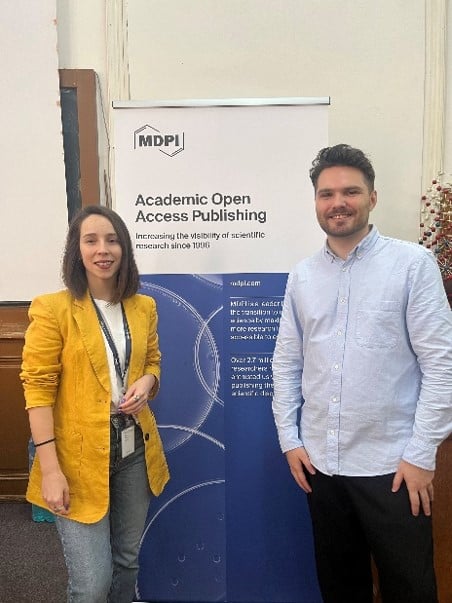
MDPI is thankful to all the participants, speakers, and organizers who attended these events. Through their enthusiasm and dedication, these events were great successes.
13 May 2024
Meet Us at the 34th CCS Congress, 15–18 June 2024, Guangzhou, China

MDPI will attend the 34th CCS Congress, which will be held in Guangzhou, Guangdong Province, China, from 15 to 18 June 2024. Registration for the event opens on 14 June.
This annual congress is hosted by the Chinese Chemical Society (CCS). With the support and active participation of chemists across the country, the annual academic conference of the Chinese Chemical Society has continued to expand in scale and influence and has become a comprehensive academic exchange platform with the most comprehensive categories, the largest scale, and the highest level in chemistry and related fields. The theme of the 34th CCS Congress is “Toward Higher Quality Chemistry Research”. It has established 70 academic branches. The forms of academic exchange include conference plenary reports (PL), keynote reports (KN), invited reports (I), oral reports (O), flash reports (F), and poster reports (P). The annual meeting collects academic papers (abstracts) from chemists. Workers in scientific research, teaching, and industry in chemistry and related fields are welcome to submit papers and actively participate in the meeting.
A series of colorful forums, continuing education, and other activities will be held simultaneously during the annual meeting. An exhibition will also be held, inviting the support and active participation of relevant universities and research institutes, enterprises, book publishing, and academic journals.
The following MDPI journals will be represented at the conference:
- Molecules;
- International Journal of Molecular Sciences;
- Polymers;
- Biomedicines;
- Inorganics;
- Processes;
- Symmetry;
- Separations;
- Membranes;
- Materials;
- Reactions;
- Chemistry;
- Compounds;
- Biomolecules;
- Sustainable Chemistry;
- Chemosensors;
- Applied Sciences.
If you are planning on attending this conference, please do not hesitate to stop by our booth #B37 and start a conversation with us. Our delegates look forward to meeting you in person and answering any questions that you may have. For more information about the conference, please visit the following website: https://www.chemsoc.org.cn/meeting/34th/.
6 May 2024
Materials Webinar | Nanomaterials for Environmental Remediation, 17 May 2024

MDPI would like to invite all experts recognized in their fields to attend the Materials (ISSN: 1996-1944) webinar entitled Nanomaterials for Environmental Remediation. The aim of the webinar is to present recent advancements in using nanomaterials for environmental remediation, with a focus on addressing water contamination. It aims to highlight how nanotechnology offers sustainable solutions by developing efficient, selective, and cost-effective nanomaterials for water treatment, ultimately contributing to mitigating the serious global issue of water pollution.
We are looking forward to seeing you at the webinar Nanomaterials for Environmental Remediation.
Title: Nanomaterials for Environmental Remediation
Date: 17 May 2024
Time: 10:30-12:30 (CEST) | 16:30-18:30 (CST Asia)
More information: https://sciforum.net/event/Materials-12
This is a free webinar. After registration, you will receive a confirmation email containing information on how to join the webinar. Registrations with academic institutional email addresses will be prioritized.
Unable to attend? Register anyway and we will let you know when the recording is available for viewing.
Register for free:
Program:
|
Speaker/Presentation |
Time in CEST |
Time in CST Asia |
|
Dr. Daniela Caschera |
10:30–10:40 a.m. |
04:30–04:40 p.m. |
|
Dr. Maria Rosaria Plutino |
10:40–11:00 a.m. |
04:40–05:00 p.m. |
|
Dr. Silvia Sfameni |
11:00–11.20 a.m. |
05:00–05:20 p.m. |
|
Prof. Abeer M. Adel |
11.20–11:40 a.m. |
05:20–05:40 p.m. |
|
Q&A Session |
11:40 a.m.–12:00 p.m. |
05:40–06:00 p.m. |
|
Closing of Webinar |
12:00–12:10 p.m. |
06:00–06:10 p.m. |
Relevant Special Issues:
“Research Progress in Nanomaterials for Environmental Remediation”
Edited by Dr. Daniela Cascher, Dr. Roberta G. Toro and Dr. Maria Rosaria Plutino
Deadline for manuscript submissions: 20 August 2024




